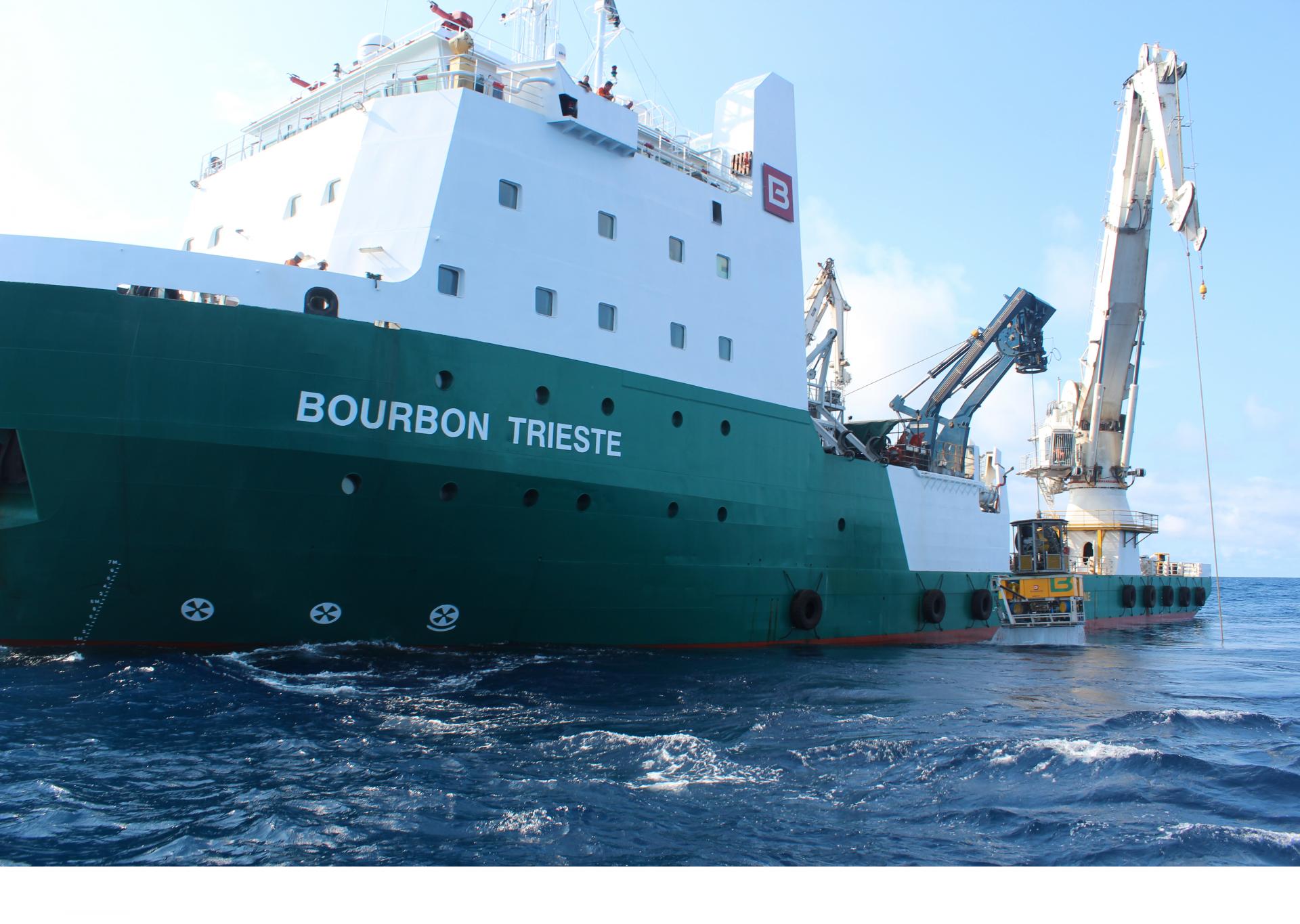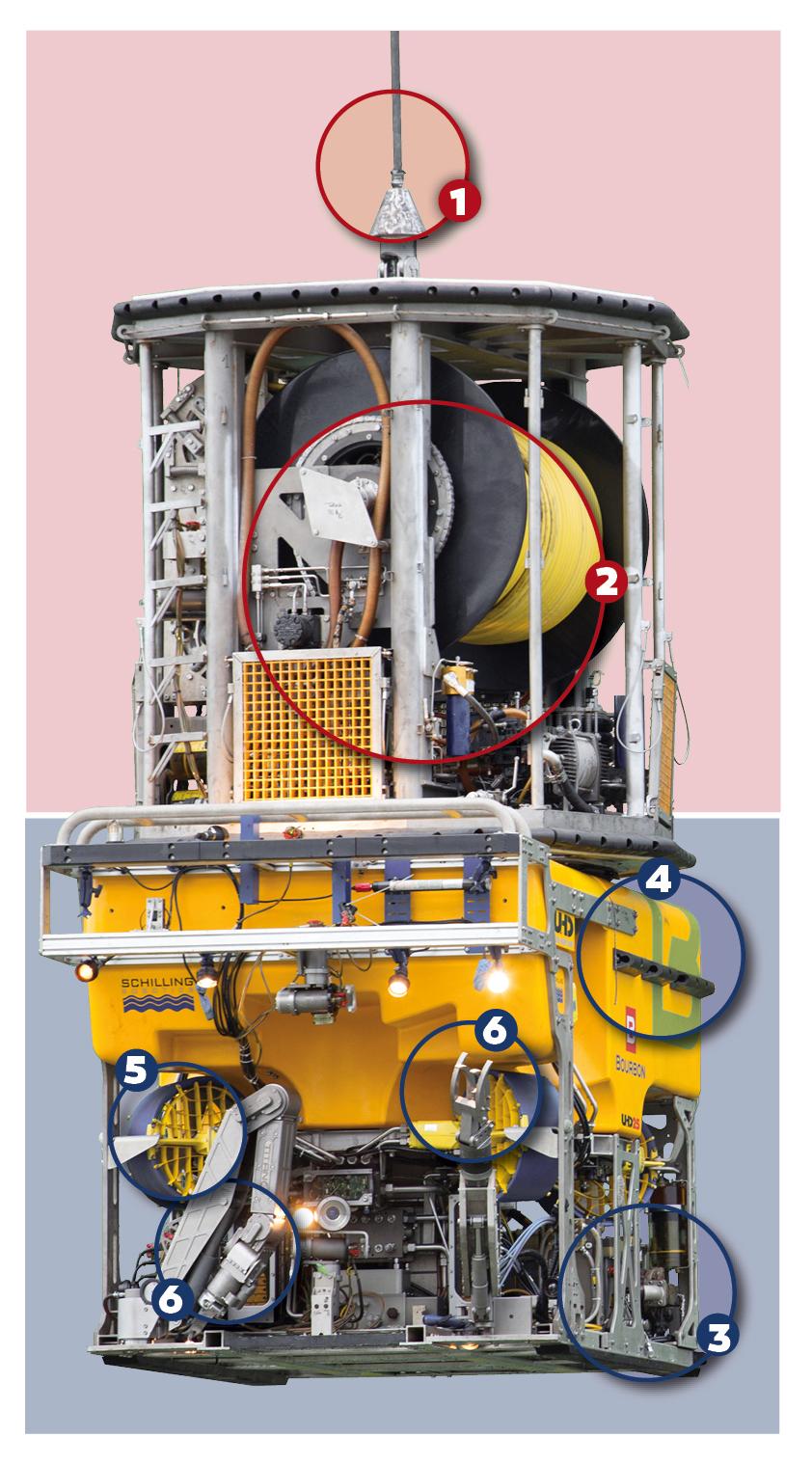
ROV: power and precision at depths up to 3,000 meters
With a solid, lightweight aluminum frame, high-precision manipulator arms, various optional tools and high-definition cameras, remotely operated submarine vehicles (ROVs) are essential for offshore inspection, maintenance and repair operations. A detailed review of this advanced equipment.
With a solid, lightweight aluminum frame, high-precision manipulator arms, various optional tools and high-definition cameras, remotely operated submarine vehicles (ROVs) are essential for offshore inspection, maintenance and repair operations. A detailed review of this advanced equipment.

1 - The umbilical or Main Lift cable
This is the main cable, which supplies the energy and the signals necessary for the operation and control of the robot from the vessel. It is composed of conductors that are fed by the various onboard sensors and tools.
Data is thus transmitted in real time to the control station and vice-versa (data, video, etc.). Both "smart" and extremely strong, it possesses "mechanical" functions which permit it to raise and lower loads up to 24 t.
2 - The TMS (Tether Management System)
It links the umbilical to the robot and thus guides the ROV to the bottom. It is equipped with powerful lights and cameras that give the pilot a clear general view of the robot in operation. It possesses a spool of 450 m of cable called a Tether.
Thinner and more flexible than the Main Lift cable, the Tether is designed to give the ROV great freedom of movement while still being piloted from the surface. The Tether is connected directly to the frame of the ROV.
3 - The frame
Built in aluminum, it houses thrusters, buoyancy modules and manipulator arms. It is also equipped with powerful lights and cameras that provide full vision of the operation in progress.
The stability of the ROV is essential during operations. The heavier elements, such as the thrusters and the arms, are therefore placed at the bottom of the frame, while the buoyancy modules are positioned at the top.
4 - Buoyancy modules
They are composed of 4 to 6 separate compartments. They offer the stability that is necessary for smooth operations and positive buoyancy to facilitate the return of the robot to the surface.
They are highly resistant to pressure and are designed to maximize payload capacities and minimize hydrodynamic drag.
5 - Thrusters
They offer the ROV a very high degree of stability by allowing it to remain positioned in spite of the current.
Controlled by the pilot from the surface, they allow the robot to maneuver forward or aft, and make U-turns or vertical movements very easily, with DP if necessary.
In its classic configuration the ROV possesses 7 thrusters.
6 - The 2 manipulator arms
They represent a proven alternative to the use of deepwater divers. These titanium electro-hydraulic arms are both very precise and much more powerful than those of divers.
One benefits from great freedom of movement and advanced rotation functions: it is the true extension of the pilot's arm and can support a load of 122 kg.
The other is used to dock the ROV or to grab and lift objects: it can support a load of 181 kg.

1 ROV mobilizes 12 people: 6 on board and 6 back to back. There are 2 crews aboard during missions, who are on-call 24/24 in day and night shifts. Each of these teams is composed of:
- A supervisor
- A senior pilot
- A junior pilot
They all have the know-how and skills required by the client for the control, maintenance and servicing of the device.
Read more


